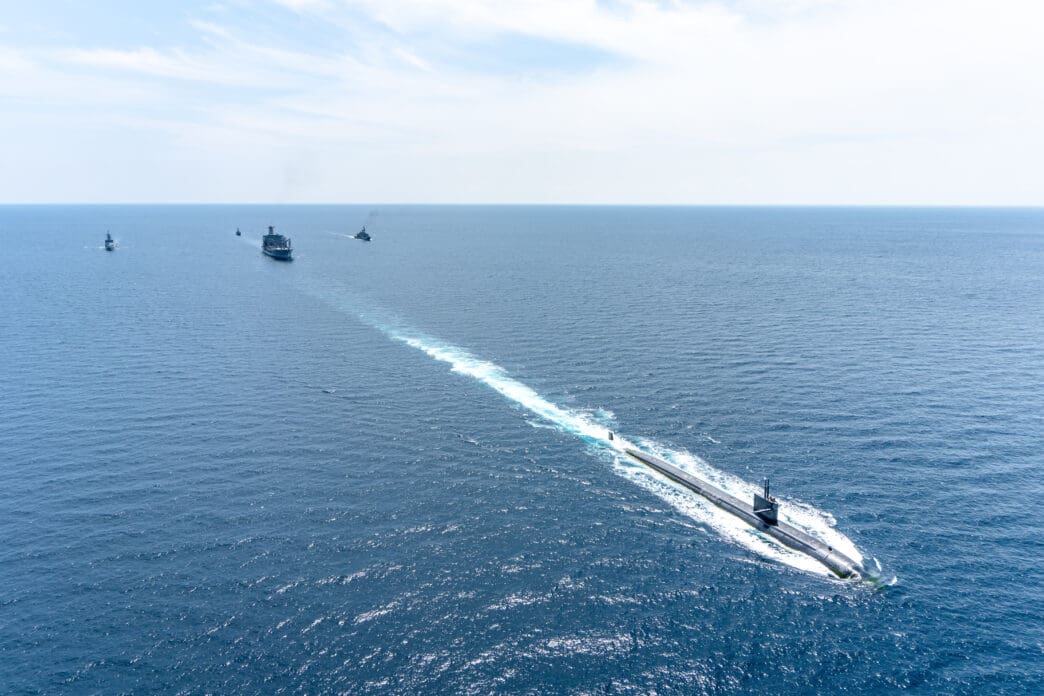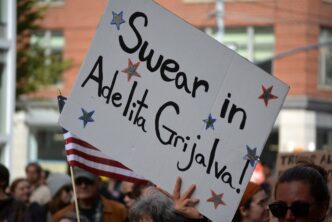Executive Summary
The Story So Far
Why This Matters
Who Thinks What?
The U.S. military has significantly increased its presence in the Caribbean over the past two months, deploying a substantial number of troops, naval, and air assets, alongside conducting training missions off the coast of Venezuela. This buildup, which includes the reopening of a military base in Puerto Rico, comes as President Trump’s administration states its focus is on counter-drug trafficking operations, while also reportedly weighing potential strikes inside Venezuela.
Military Buildup in the Caribbean
As of mid-October, a notable portion of all deployed U.S. naval assets globally are situated within U.S. Southern Command, the military’s operational command for the region. This deployment includes the Iwo Jima Amphibious Ready Group and the 22nd Marine Expeditionary Unit, comprising over 4,500 Marines and sailors.
Naval assets include three guided-missile destroyers, an attack submarine, a special operations ship, a guided missile cruiser, and P-8 Poseidon reconnaissance aircraft. Air deployments feature 10 F-35 fighter jets and at least three MQ-9 Reaper drones positioned in Puerto Rico, which has become a central hub for U.S. military operations in the area.
Naval Station Roosevelt Roads in Puerto Rico, which had been closed since 2004, is now operational again. Satellite imagery and photographs indicate the presence of military aircraft, including at least one AC-130J Ghostrider equipped with Hellfire missiles at José Aponte de la Torre Airport, used by the installation.
Open-source flight data reviewed by CNN identified over 200 military flights in the Caribbean between August 15 and October 15. These missions involved 83 different aircraft, including intelligence-gathering planes and midair refueling tankers. Some intelligence assets may have been redirected from Eastern Europe to the Caribbean theater.
In early October, “Little Bird” light attack helicopters, typically used by U.S. Special Forces for covert missions, and MH-60M Black Hawk helicopters were observed conducting training operations off the coast of Trinidad and Tobago.
Objectives and Expert Analysis
The Trump administration has consistently stated that the increased military presence is part of an intensified counter-drug trafficking campaign, including attacks on speedboats suspected of carrying drug traffickers from Venezuela and Colombia. However, CNN has reported that President Trump has also been considering strikes inside Venezuela as part of a broader strategy to weaken leader Nicolas Maduro.
Experts suggest that while the current U.S. military footprint in the Caribbean is substantial, it is likely insufficient for a full-scale invasion of Venezuela. Elliott Abrams, who served as the U.S. envoy to Venezuela during Trump’s first term, indicated to CNN that the presence is “too big for just hitting a few speedboats, though it is not big enough for an invasion of Venezuela.” He added, “What’s in the middle, I think, is a pressure campaign, meant to rattle Venezuela.”
Peter Singer, a strategist focusing on defense issues, echoed this view, stating that the buildup is “enough to cause pain but not to seize terrain.” He clarified that “We’re not talking about an invasion and occupation force.” The U.S. does possess the capability to conduct strikes inside Venezuela from a distance, such as Tomahawk missile strikes from its naval assets.
Venezuela, despite not being a military powerhouse, is a large country with diverse and challenging terrain. Concerns have also been raised about the ongoing hurricane season and Venezuela’s air defense capabilities, which include S-300 anti-aircraft missile systems, anti-aircraft guns, shoulder-launched air defense systems, and F-16 fighter jets.
Recent Demonstrations of Force
In what appeared to be a show of force, the U.S. flew B-52 bombers near Venezuela’s coast for four hours on Wednesday, October 15. At their closest point, the bombers were 48 miles from Los Roques, a Venezuelan island archipelago. The bombers remained within a part of Venezuela’s flight information region (FIR) that constitutes international airspace, though it is controlled by the country’s aviation authority.
The U.S. military has also conducted other training missions in the area, including live-fire training and flight operations earlier this month, as well as multiple flights of T-38 jet trainers in the Caribbean since September 22.
Summary of Deployments
The extensive U.S. military deployment in the Caribbean reflects a dual strategy of combating drug trafficking and exerting pressure on the Venezuelan government. While experts rule out an immediate large-scale invasion, the presence of significant naval and air power, along with specialized units, provides the U.S. with considerable options for regional influence and targeted actions.








